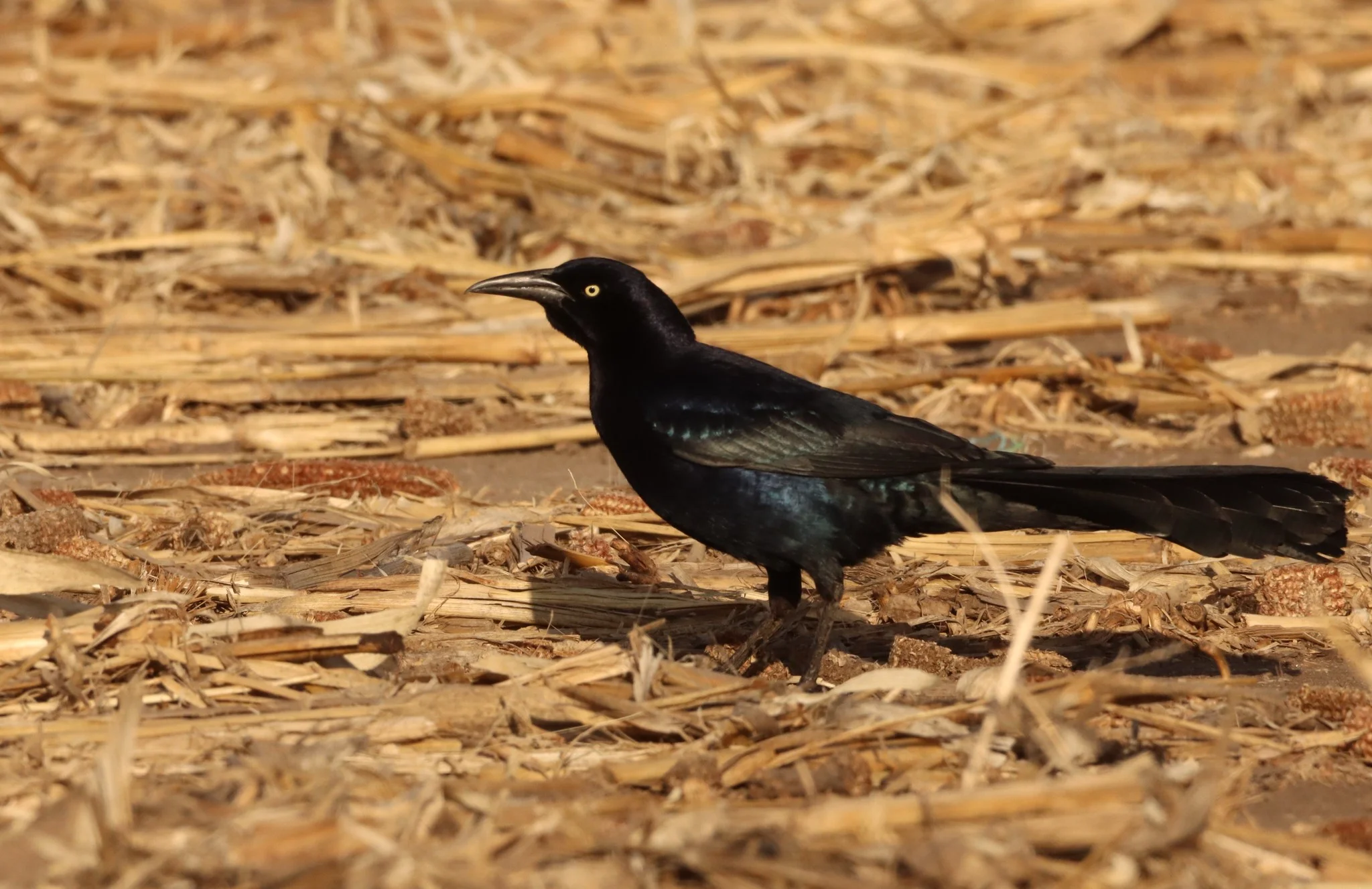Texas is one of the most heavily birded states in the nation, trailing only California and New York in terms of the number of eBird checklists submitted. Although birding in Texas is thrilling, being a new birder here can be overwhelming. Indeed, it can be especially challenging to identify some of the dozens of black birds in Texas.
Fortunately, I’ve made just the guide to help. This article will detail 22 Texas black birds. I’ll tell you how to distinguish these birds from similar species, and I’ll give you some insight into the lives that the different types of blackbirds in Texas. Let’s get started!
Table of Contents
The Different Types Of Black Birds In Texas
Black-bellied Whistling-Duck
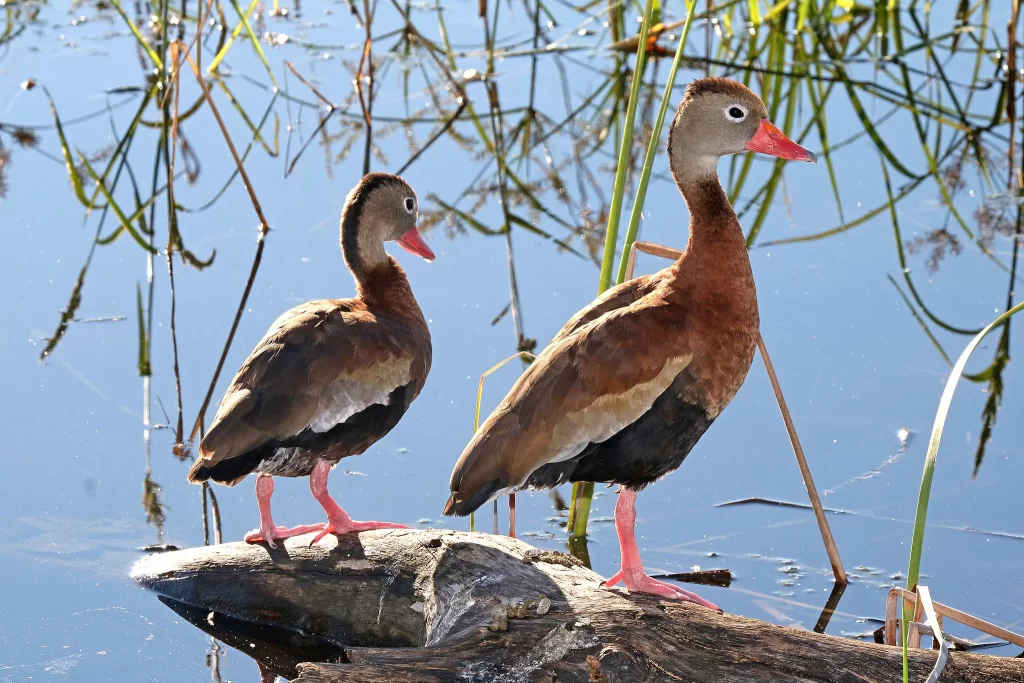
Black-bellied Whistling-Ducks are among the most common waterfowl in Texas during the breeding season, being reported on more than 300,000 eBird reports in the state.
These black birds of Texas are sexually monomorphic, and though their heads, necks, and chests are devoid of black, they have plenty of black coloration on their undersides and backs. Black-bellied Whistling-Ducks often nest in tree cavities or birdhouses – an unusual behavior for ducks.
Black-bellied Whistling-Ducks primarily breed in the eastern, southern, and north-central portions of the state, though they have been recorded throughout Texas. These black Texas birds frequent shallow ponds, lakes, and marshes.
Black-necked Stilt
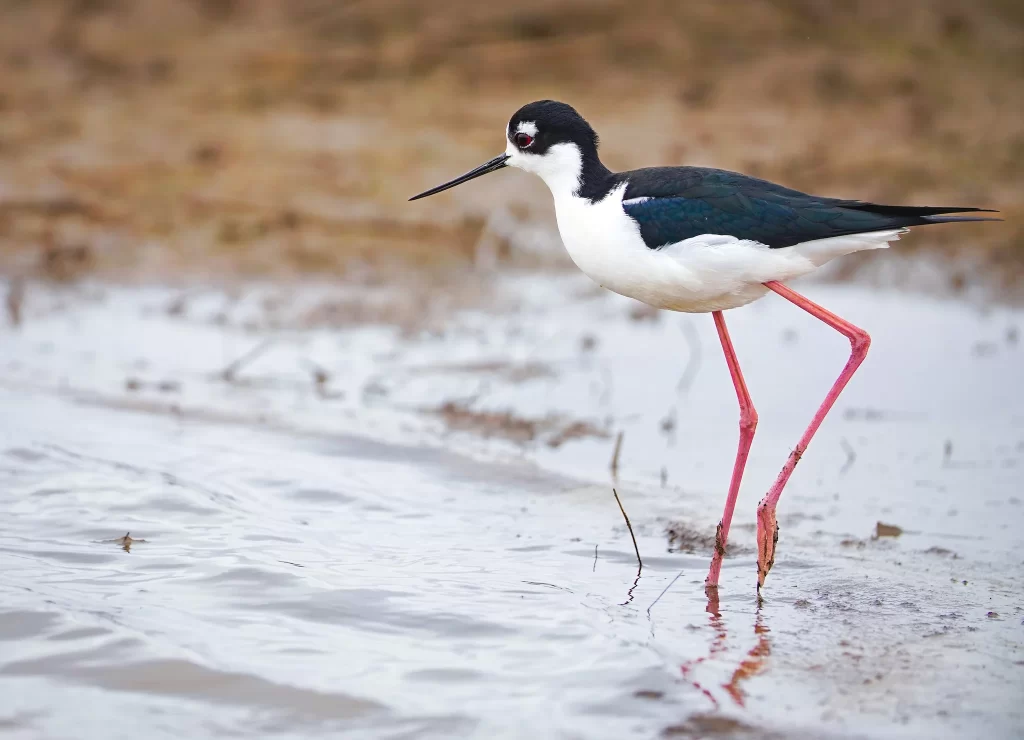
Black-necked Stilt are stunning gangly shorebirds with massive pink legs, black backs, and white undersides. These black birds with white bellies are among the most recognizable shorebirds in Texas, and they have been recorded on more than 200,000 eBird checklists.
Black-necked Stilts use their long legs to wade into water that is too deep for other shorebirds to access. Here, they probe the water with their bills and consume various invertebrates.
These black birds in Texas can show up anywhere in the state during migration. Some of the best places to look include sewage lagoons, marshes, and shallow ponds. Black-necked Stilts winter along coastal Texas.
Black Skimmer
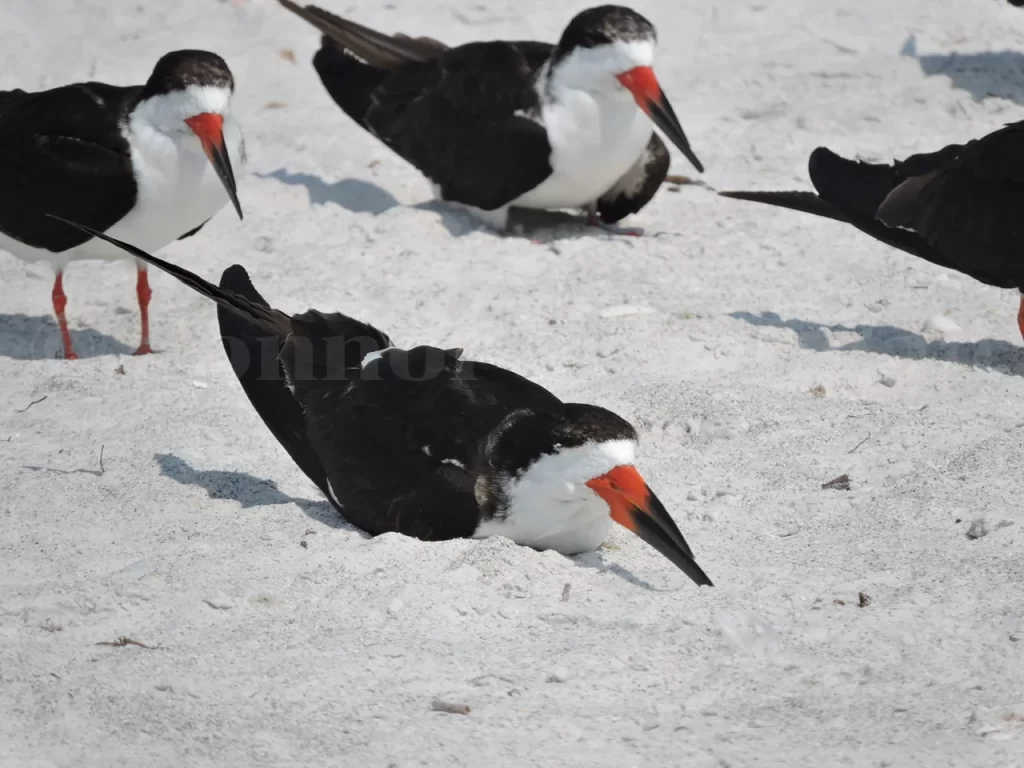
Black Skimmers are fascinating South Texas black birds with odd bills that feature a lower mandible that is far longer than the upper. These curious birds are white below and black above, and there have been more than 50,000 eBird observations in Texas.
Black Skimmers are strongly associated with saltwater habitats. Therefore, it’s extremely unlikely that they will be observed inland. However, those who make it to the coast will easily be able to find this Texas black bird, as it’s common at all times of the year.
Black Skimmers may be found loafing on beaches with sleeping seagulls, but getting to see a hunting Black Skimmer is a real treat. Indeed, the hunting process entails a bird flying low over the ocean and then dipping their long lower mandible into the water to capture fish.
Anhinga
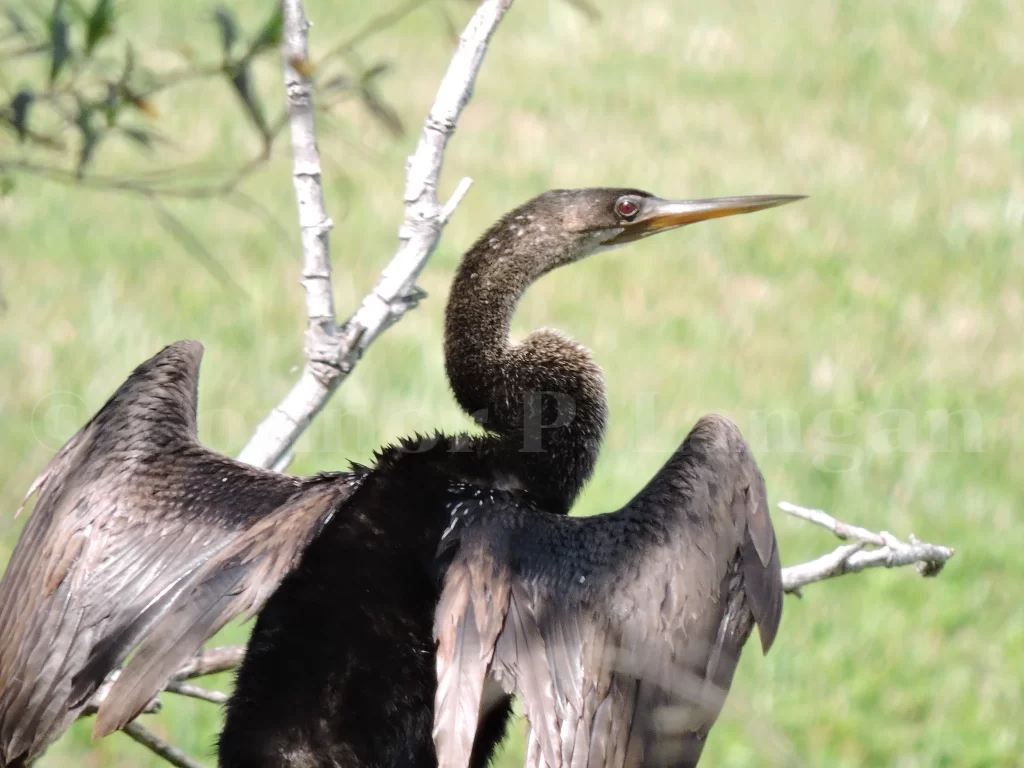
An Anhinga is a bird that looks like a cormorant. However, the two creatures are unrelated despite their similarities. Of course, one thing that differentiates an Anhinga from a cormorant is the long, spear-like bills possessed by these black birds of Texas.
Anhingas use their bills to skewer fish as they fish through the water. These impressive hunters may submerge themselves entirely during this process. Marshes, lakes, and reservoirs are great places to search for these Texas black birds with long tails.
Anhingas are primarily found around coastal Texas despite only hunting in freshwater. Nevertheless, they get progressively rarer as one travels inland. There have been nearly 90,000 eBird reports of this bird that is black in Texas.
Double-crested Cormorant
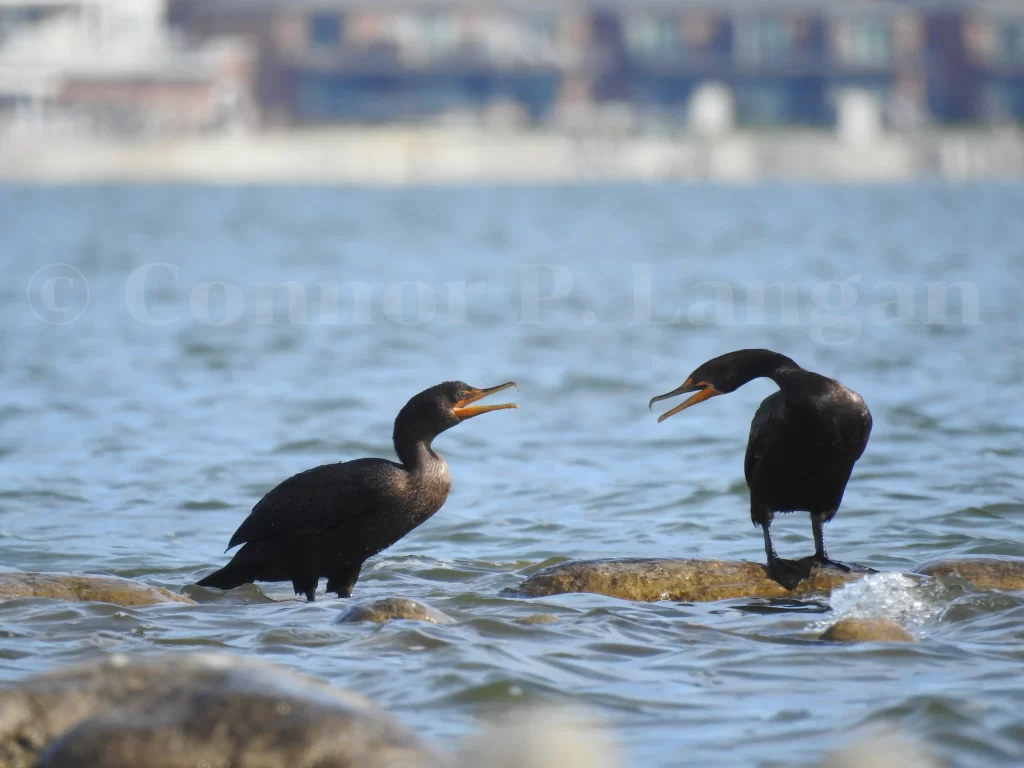
Double-crested Cormorants are all-black Texas birds save for yellow patches of skin around their faces. Unlike the similar Anhinga, they’ve got a stout, hooked bill that is excellent for grasping slippery fish.
Any aquatic habitat–both freshwater and saltwater–can support Double-crested Cormorants. Here, they dive for fish with great efficiency. You may notice them sitting on a snag after swimming to dry off their wings. This is because they lack the oils that many other diving birds have that keep them dry during a swim.
These black birds in Texas are most common from mid-October through mid-April, though they may be observed throughout the year. Moreover, it’s worth noting that Double-crested Cormorants are more scarce in western Texas compared to the eastern part of the state. There have been about 350,000 eBird observations in Texas.
Neotropic Cormorant
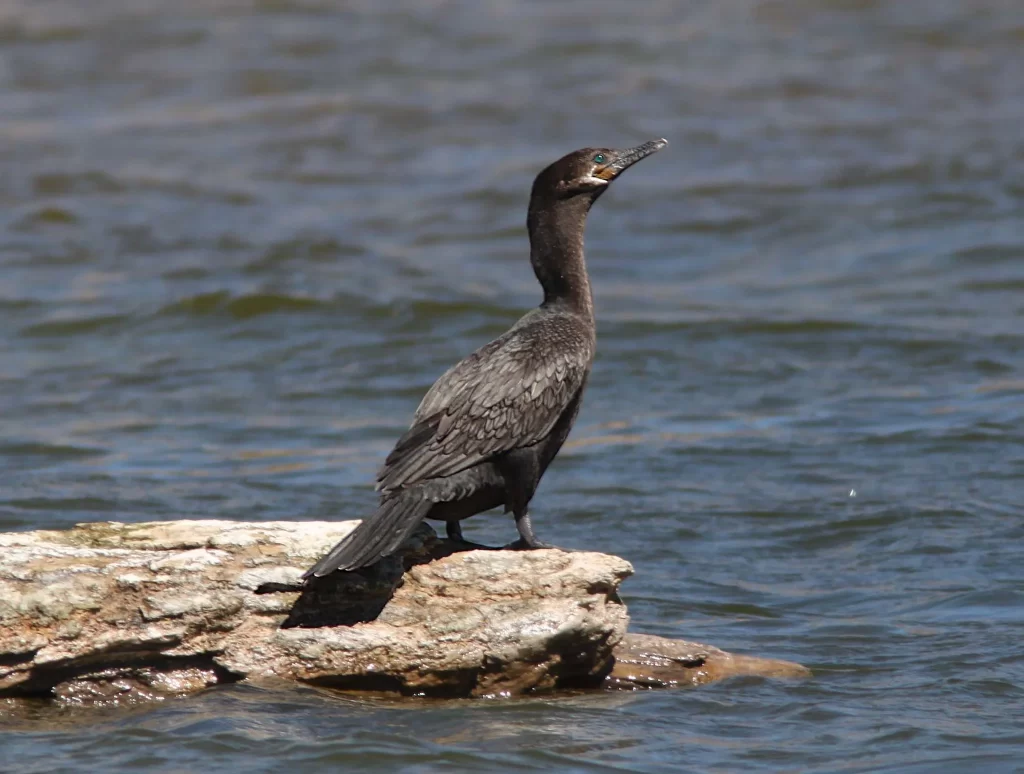
Neotropic Cormorants look very much like petite Double-crested Cormorants, as they are also black birds of Texas. Luckily, they are fairly easy to differentiate in the breeding season thanks to the orange patch of skin on their face that is bordered by white color.
In the nonbreeding season, birders will have to look for the smaller frames of these birds to try to identify them. The bill, in particular, is far more petite than that of a Double-crested Cormorant.
Neotropic Cormorants are equally common at all times of year in Texas. Although not as widely reported as Double-crested Cormorants, there have still been 280,000 eBird records of this black bird of Texas. Neotropic Cormorants are versatile, being able to thrive in any type of water. Marshy coastal areas are the best places to check for them in Texas.
Black Vulture
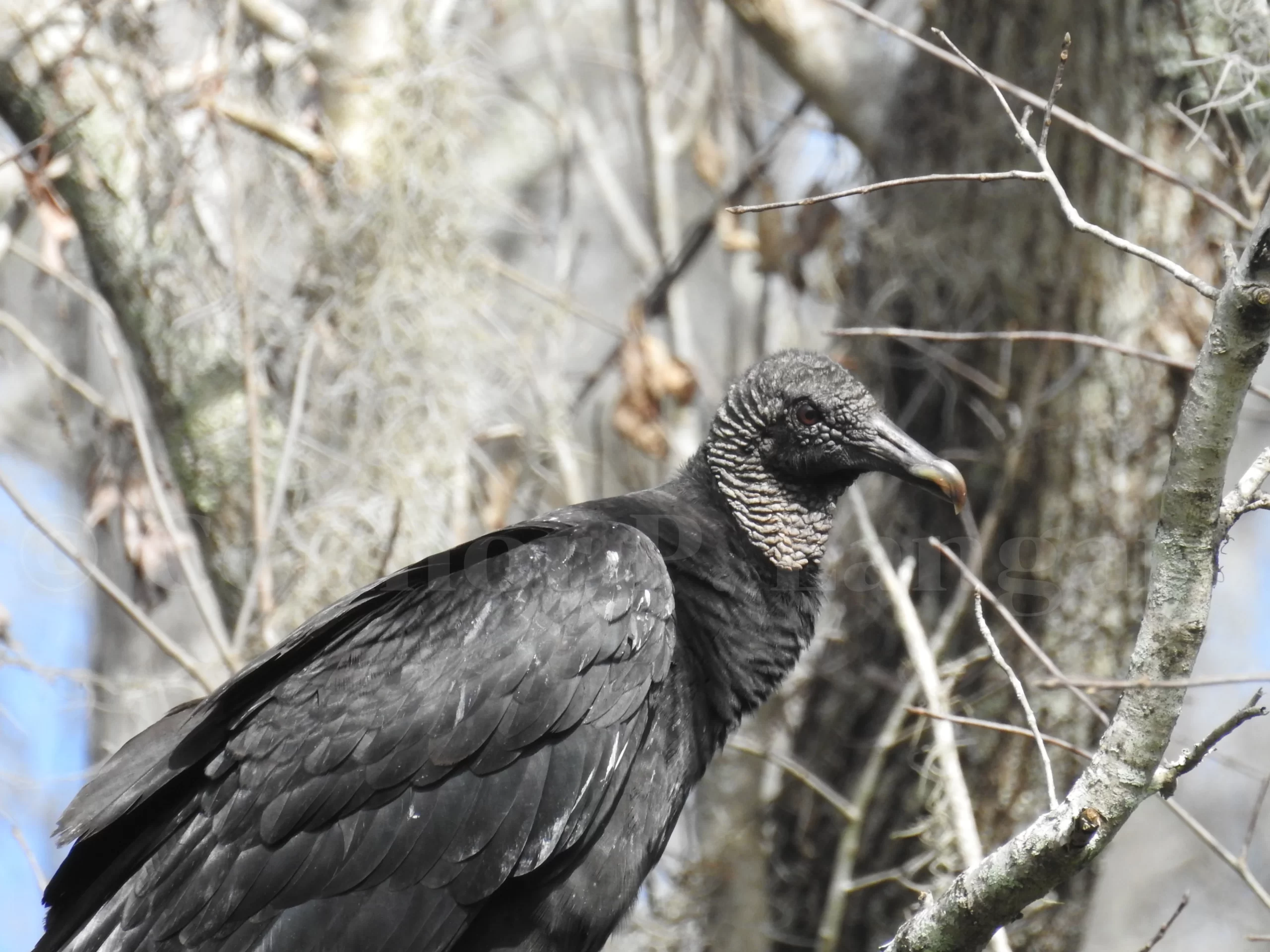
Black Vultures are one of two vultures in Texas. They doubtlessly deserve inclusion on a list of the types of black birds in Texas thanks to their entirely black bodies, feathers, and skin.
Although many dislike Black Vultures, they do a great service for all Texans as they clean up animal carcasses and prevent the spread of disease. While many believe that these birds of prey are aggressive, no proof supports the idea that they ever intentionally hurt humans.
Black Vultures are abundant in Texas, with more than 640,000 eBird observations of this species despite being largely absent from the Texas Panhandle and western Texas. Look for their diagnostic pale wingtips as they soar through the air.
Bald Eagle
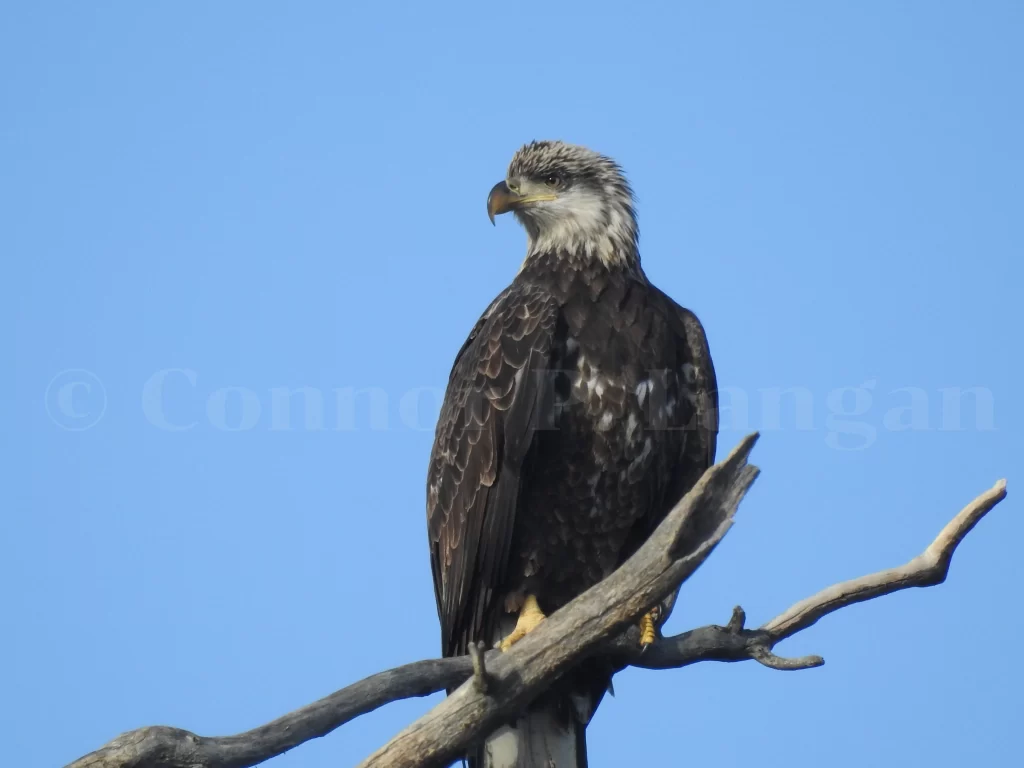
Bald Eagles are one of two types of eagles in Texas. Of course, they’re a species that needs no introduction, as they’re one of the most familiar birds in Texas despite not being particularly common in the Lone Star State.
Bald Eagles display black coloration in all stages of their lives. The large size and plain black-brown coloring of these birds of prey can be used to separate them from other raptors. In Texas, there have been 46,000 eBird reports that have featured Bald Eagles.
This Texas black bird is most common in the eastern portion of the state. Here, the highest densities of nests are reported. Elsewhere, look for Bald Eagles at reservoirs where they scan for fish from exposed perches or easily locate carrion on which to dine.
Harris’s Hawk
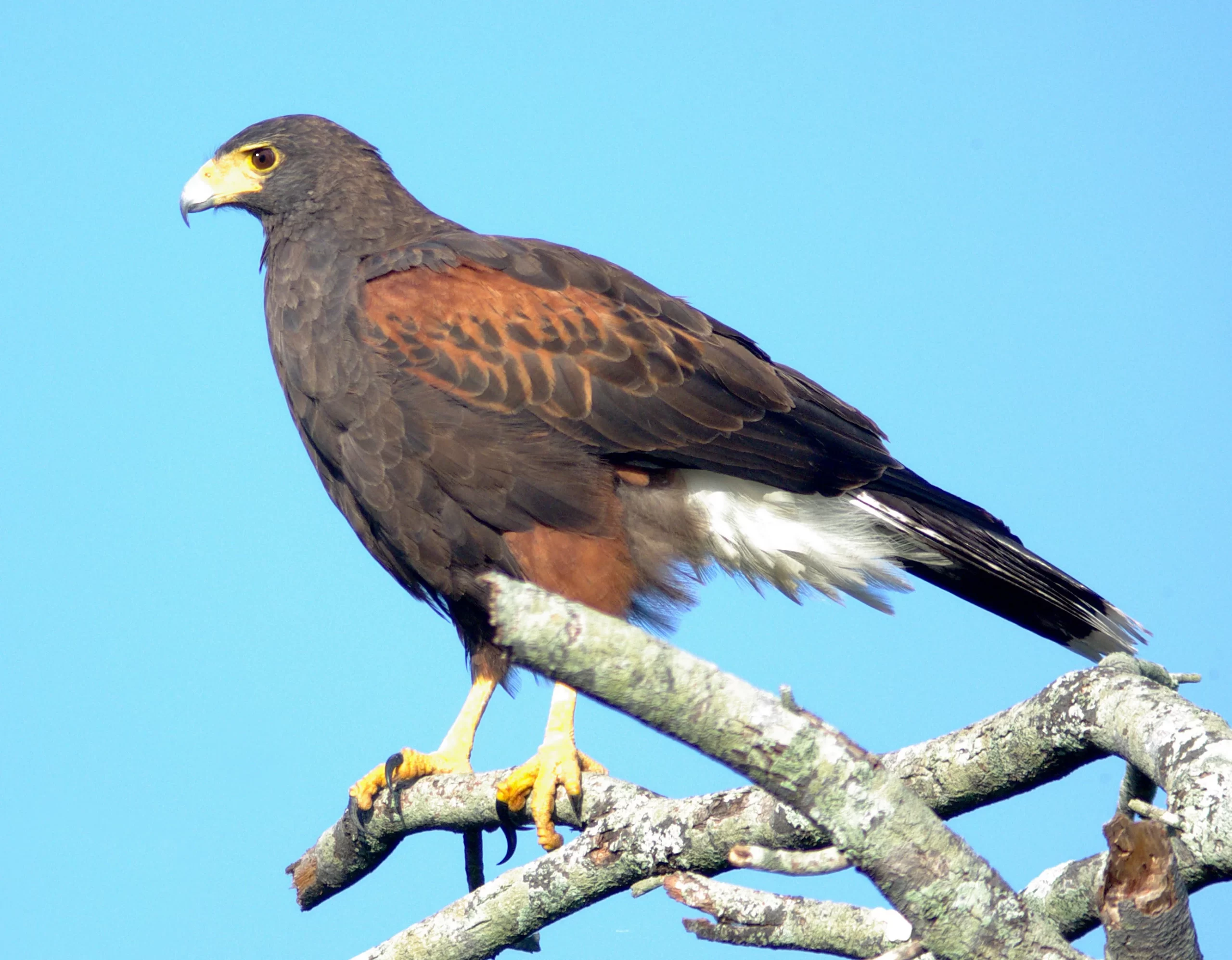
Harris’s Hawks are a south Texas specialty, being primarily distributed south of San Antonio. However, decent-sized populations also exist in western Texas in places like El Paso and Odessa.
These raptors are largely black with rusty-colored wings and leg feathers. A white band at the tip of the tail and white undertail coverts are also helpful for identification. Overall, 70,000 eBird reports in Texas have included Harris’s Hawks.
This hawk is a denizen of arid areas where they hunt in open woodlands and desert habitats. Summer is the time in which they’re least commonly observed, but they can be found in the state throughout the year. Though they are fierce predators, these black birds in Texas are not a danger to humans.
Downy Woodpecker
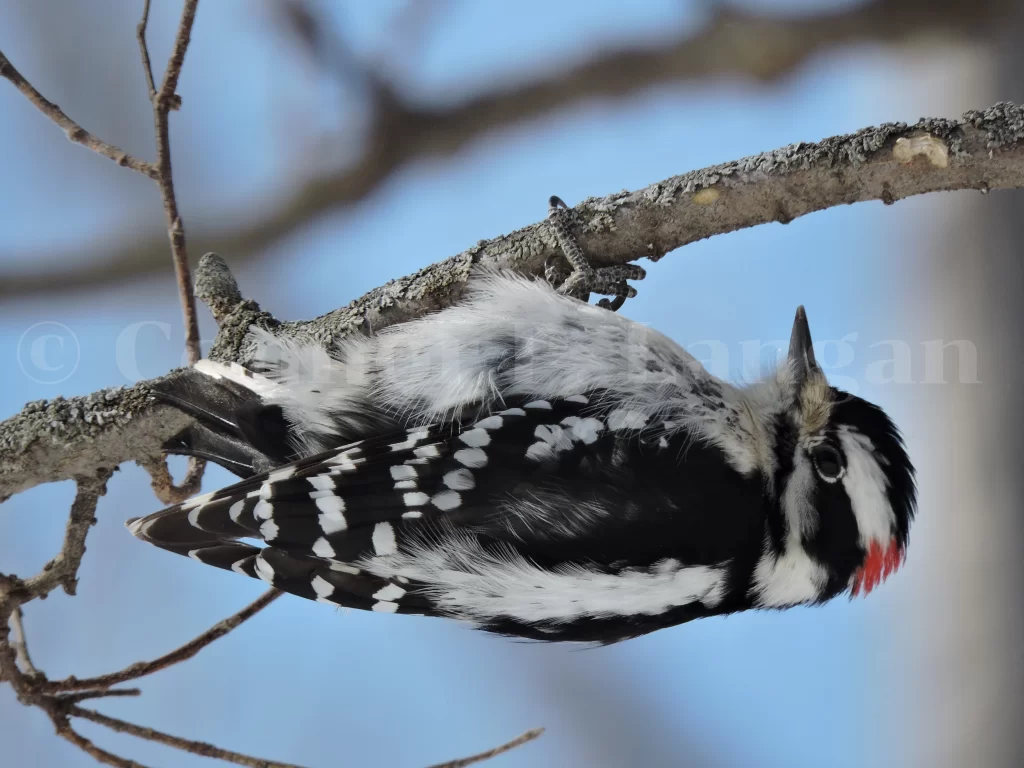
Downy Woodpeckers are tiny, common woodpeckers in eastern Texas. However, they are largely absent from western and southern Texas. Overall, there have been about 400,000 eBird observations in the Lone Star State.
Downy Woodpeckers are familiar black and white birds in Texas. They are typically solitary, but they may be seen foraging with a mate. Males and females can be differentiated thanks to a red spot on the back of the male’s head.
The extensive forests that cover much of eastern Texas make for an exceptional Downy Woodpecker habitat. These petite woodpeckers do not do well once the habitat transitions into an arid, open habitat filled with small trees and shrubs. Here, birds like the Ladder-backed Woodpecker are much more apt to thrive.
Pileated Woodpecker
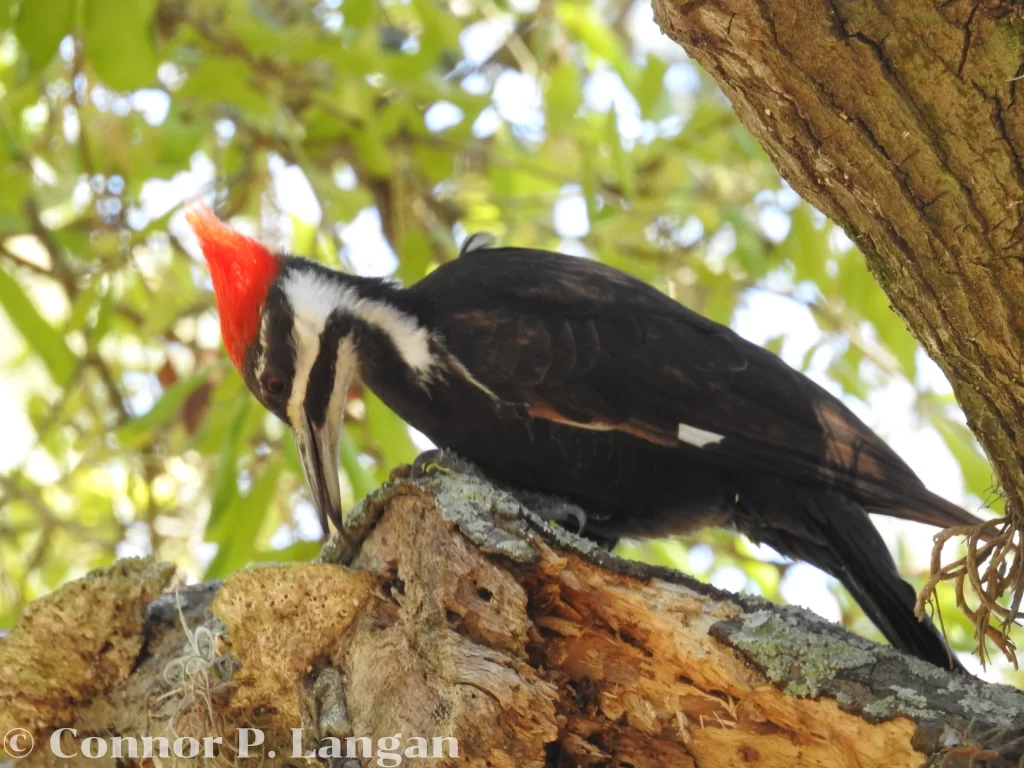
Pileated Woodpeckers are large, unmistakable woodpeckers that excel in eastern Texas. Much like Downy Woodpeckers, Pileated Woodpeckers cannot occupy the dry, arid habitats that cover much of the state. Luckily, the eastern forests of Texas make for a perfect habitat.
There have only been two records of this black bird in Texas west of San Antonio. Overall, about 93,000 Texas eBird reports have included these magnificent birds. Although it looks like they could destroy a tree with their massive bill, these creatures are harmless to trees.
Pileated Woodpeckers are equally common in eastern Texas no matter the time of year. They love large, mature tracts of forest, but these birds with mohawks have become habituated to city parks in certain areas.
Crested Caracara
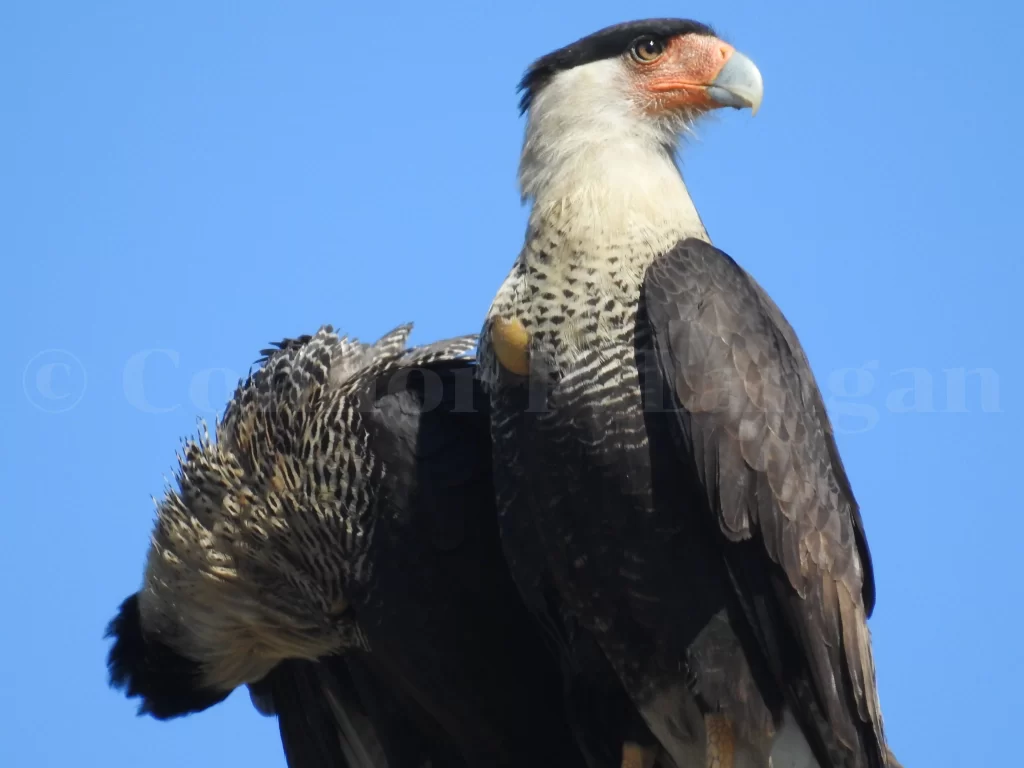
Crested Caracaras are odd falcon relatives that inhabit the hot, arid reaches of central and southern Texas. They are much more than just black birds in Texas, as they’ve got stunning red and blue bills. Moreover, they have white chests with black speckles.
There have been more than 250,000 eBird observations of these raptors in the state. Although they are present at all times of the year, summer generally has the lowest detection rates since adults are tending to young.
Crested Caracaras are most common in open landscapes that feature prominent lookout points. For instance, they’ll readily use bare trees or telephone poles when scanning for prey. Much like vultures, these black birds of Texas are scavenger birds that happily eat carrion.
American Crow
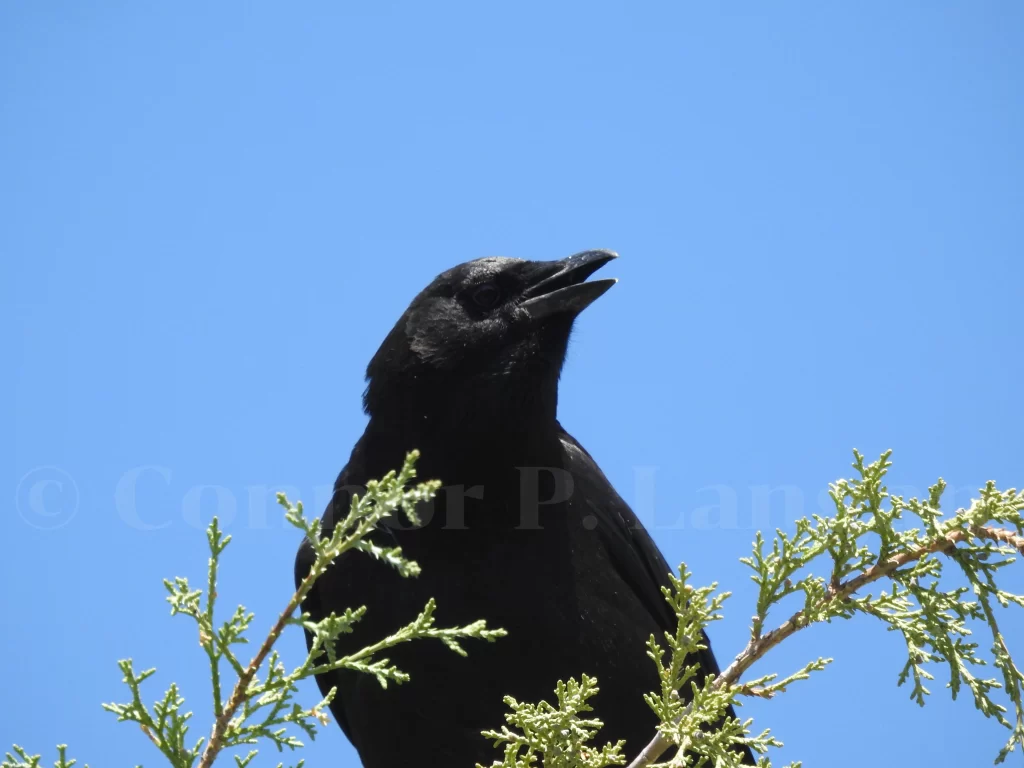
American Crows are a common sight throughout much of the United States, and the more than 580,000 observations of this species in Texas prove that there is no shortage of these birds here. Being entirely black, they have an undeniable right to be on this list.
Although American Crows are abundant in much of Texas, there are some parts of the state in which these black birds in Texas are completely absent. For instance, there are no American Crows south of Corpus Christi or along the state’s border with Mexico.
These North Texas black birds are highly adaptable, being able to thrive in both rural areas and urban settings. American Crows are common during all times of year in Texas, with few migrating to or from the state.
Common Raven
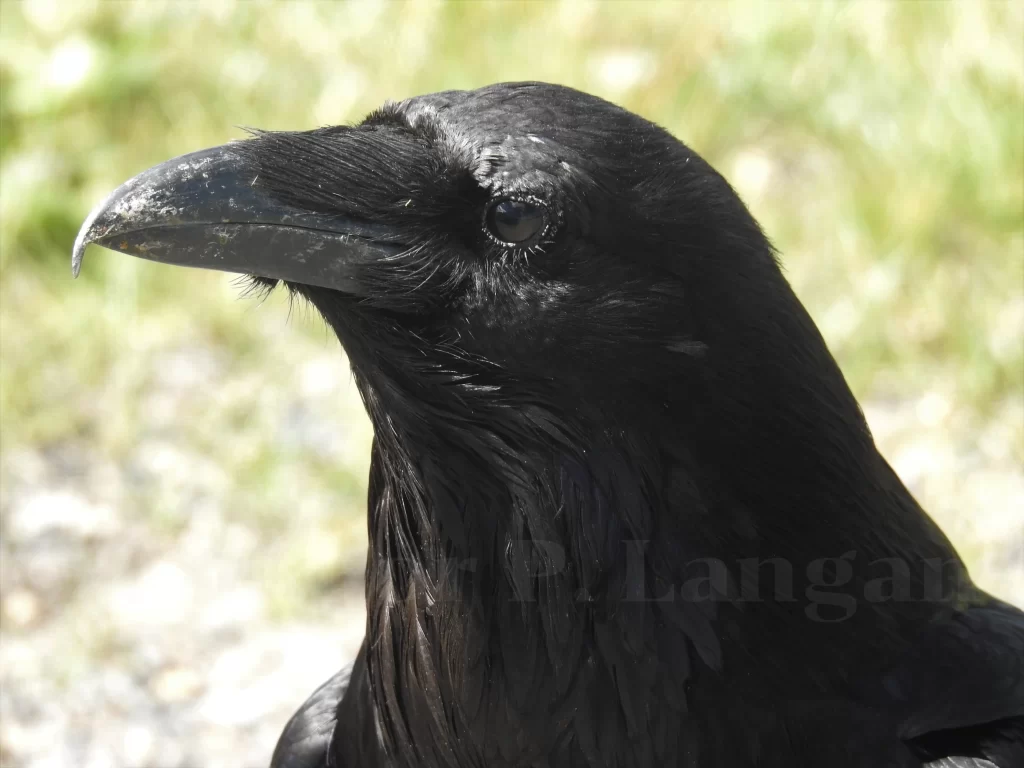
Common Ravens look like larger, shaggier versions of American Crows. They are also entirely black Texas birds, but they are not nearly as abundant as their crow counterparts. Indeed, there have only been about 77,000 eBird observations in Texas.
Common Ravens are western Texas specialties, occupying ecosystems where American Crows cannot be found. They occupy a contiguous range stretching from the northwest corner of the Texas Panhandle diagonally down to San Antonio.
Look for these black birds in Texas in patches of coniferous trees or high-elevation locations – think places such as the Davis Mountains. The Chihuahuan Raven looks very similar to a Common Raven, but know that these birds are more likely to be in open, arid habitats.
European Starling
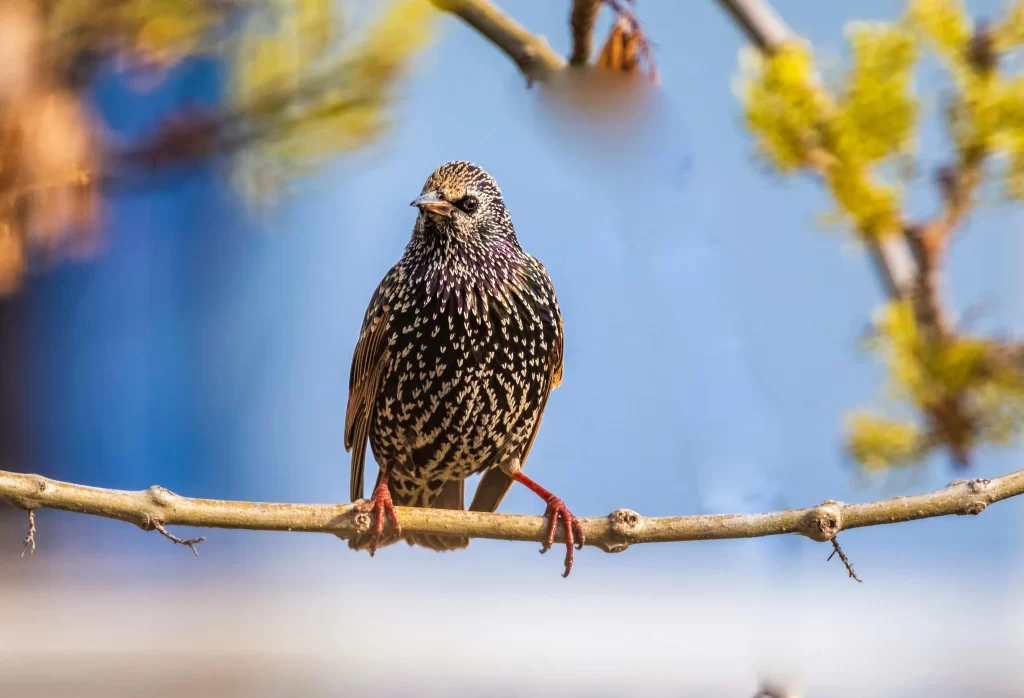
European Starlings are invasive birds that have established a strong presence in Texas. Indeed, the more than 600,000 eBird observations prove their permanence. Although some believe that starlings look like grackles, it is rather easy to separate the two birds.
European Starlings have a glossy black plumage and yellow bill in the breeding season, while they switch to a duller black-gray color in the nonbreeding season.
These Texas black birds prosper in areas that have tree cavities in which they can nest. Indeed, they often outcompete native species such as bluebirds for nesting opportunities. Anywhere from metropolitan areas like Dallas and Houston to tiny towns can support European Starling populations.
Red-winged Blackbird
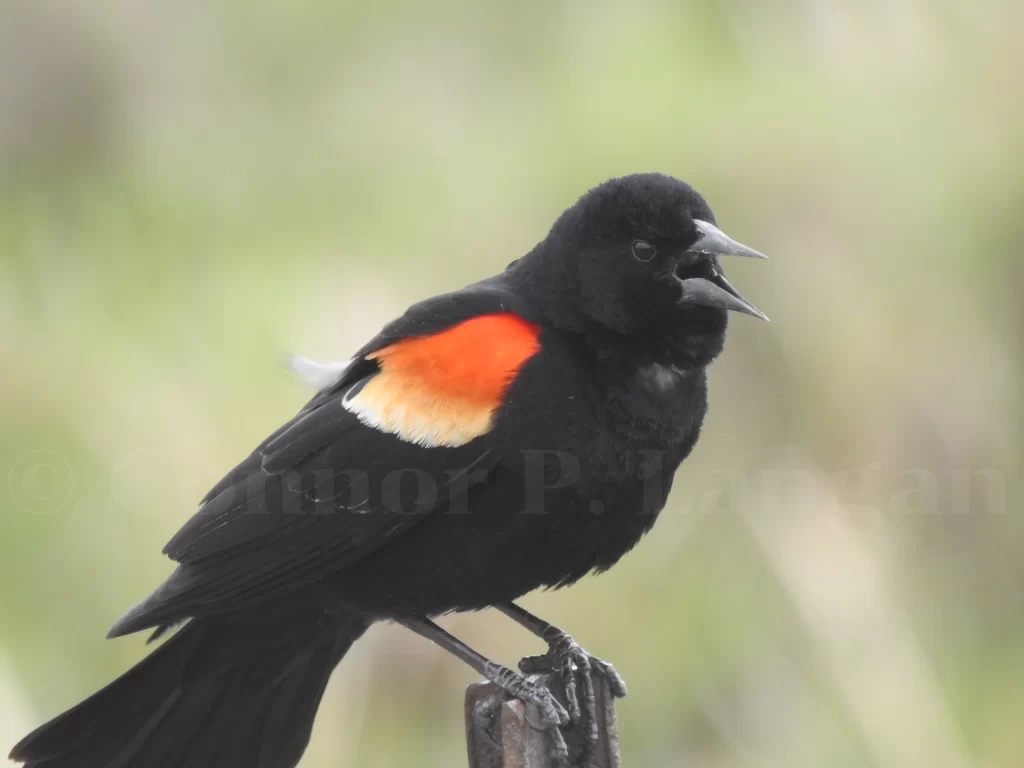
Red-winged Blackbirds are a species that needs no introduction. Indeed, the males with their black plumage and red shoulders and females with their drab, brown plumage are familiar sights in Texas.
These black bird species in Texas can be found throughout the state, and a total of 680,000 eBird observations have been submitted. Red-winged Blackbirds are common during all times of year in Texas, though additional birds migrate to the state in winter.
In the nonbreeding season, these black birds in Texas form large groups with other blackbirds and forage in fallow fields in search of grains. During the breeding season, look for Red-winged Blackbirds in a variety of wetland habitats like marshes, ponds, and lakes.
Bronzed Cowbird
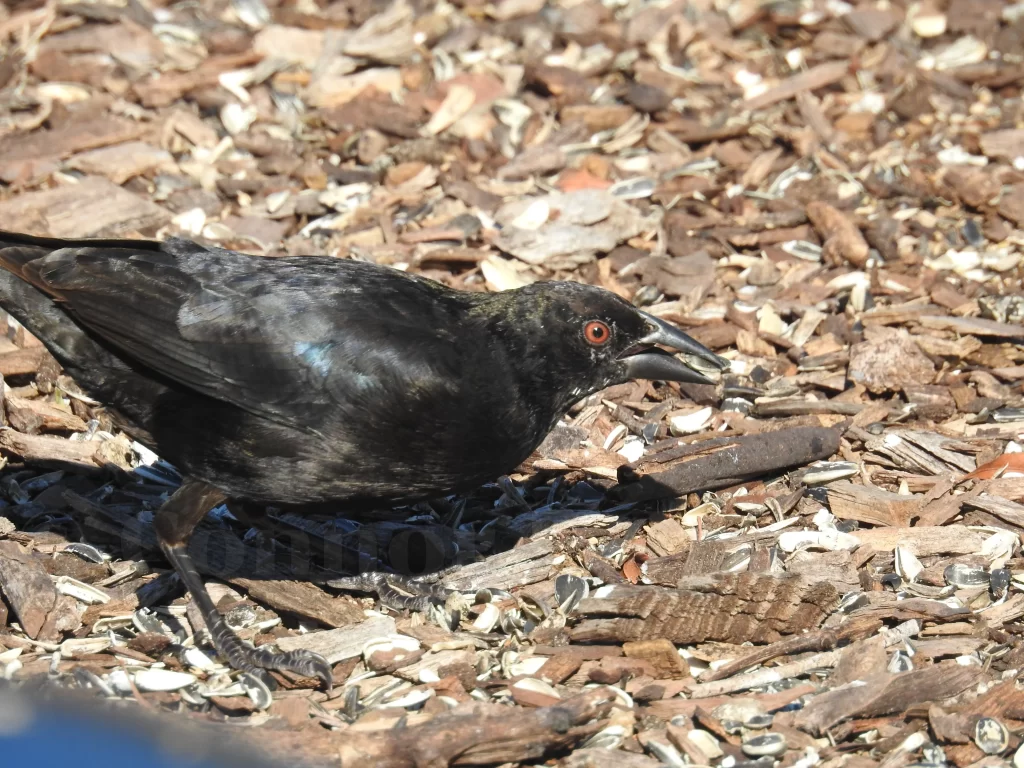
Bronzed Cowbirds have piercing red eyes that separate them from other blackbird species. Males have a glossy black plumage, while females are brown and unstreaked.
There have been 66,000 Bronzed Cowbird eBird observations in Texas, with the vast majority coming from southern Texas. Here, they spend summers in areas south of Austin, but they can be found in the southern tip of Texas year-round.
Like all cowbirds, Bronzed Cowbirds are brood parasites. This means that these South Texas black birds lay their eggs in the nests of other birds and rely on those birds to raise their young. Bronzed Cowbirds are regulars at bird feeders where they can be seen feeding along the ground.
Brown-headed Cowbird
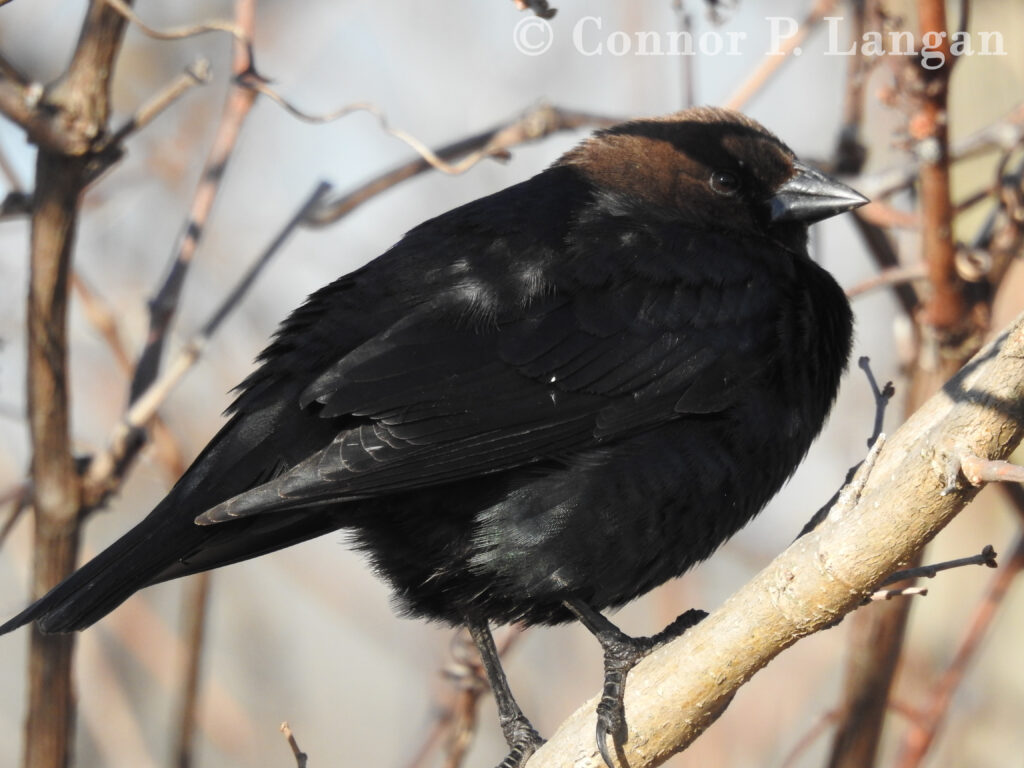
Brown-headed Cowbirds are small blackbirds with stout bills. Males have glossy black bodies with brown heads, while females are a pale brown color. More than 337,000 eBird observations in Texas have reported this species.
These black birds in Texas can be found throughout the state at all times of year, though they aren’t as common in open, arid areas of western Texas. Brown-headed Cowbirds are very social, being typically found in the company of other cowbirds.
Small seeds make up the bulk of cowbird diets, but they’ll also eat a fair amount of insects. Brown-headed Cowbirds can be found year-round in most of Texas in a variety of semi-open habitats. They’ve adapted well to urban environments.
Brewer’s Blackbird
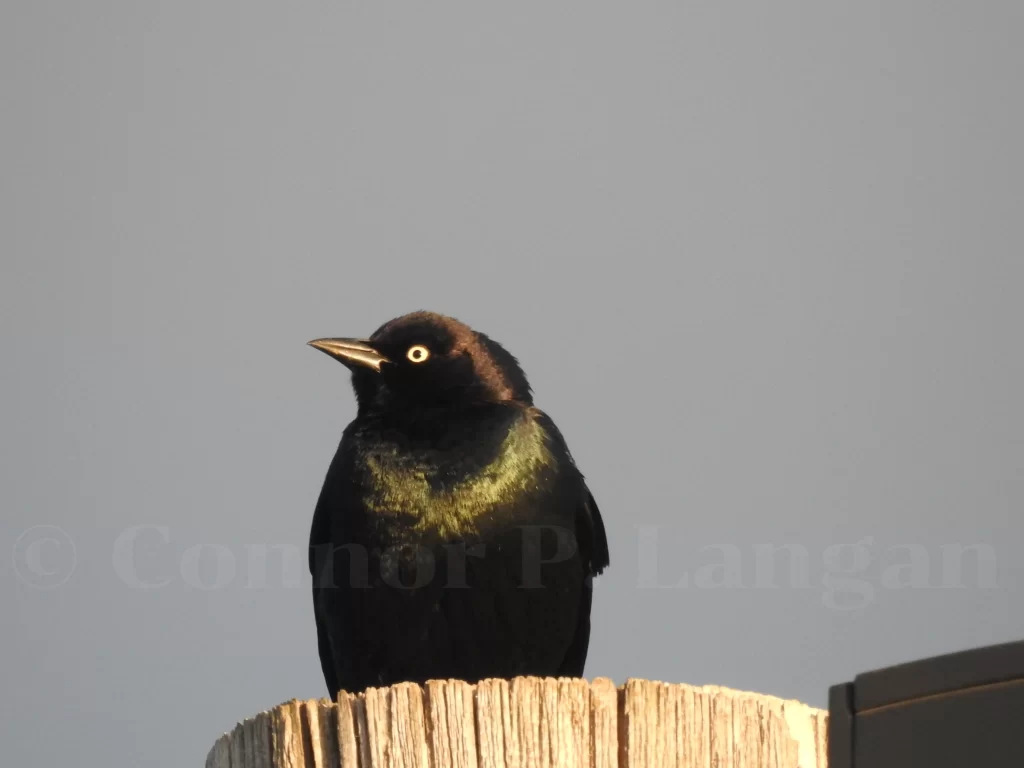
Brewer’s Blackbirds do not breed in Texas, but they are winter residents throughout the state. In total, nearly 40,000 eBird observations document this species, and it appears that western Texas hosts the largest numbers.
Male Brewer’s Blackbirds are a glossy black color with pale yellow eyes, while females are brown with dark eyes. These black birds in Texas form groups with other Brewer’s Blackbirds or join with other blackbird species in the nonbreeding season.
A variety of open habitats support Brewer’s Blackbirds. Farmsteads, fields, grasslands, golf courses, and similar habitats are great places to look for them. Late October through April is the best time to observe them.
Common Grackle
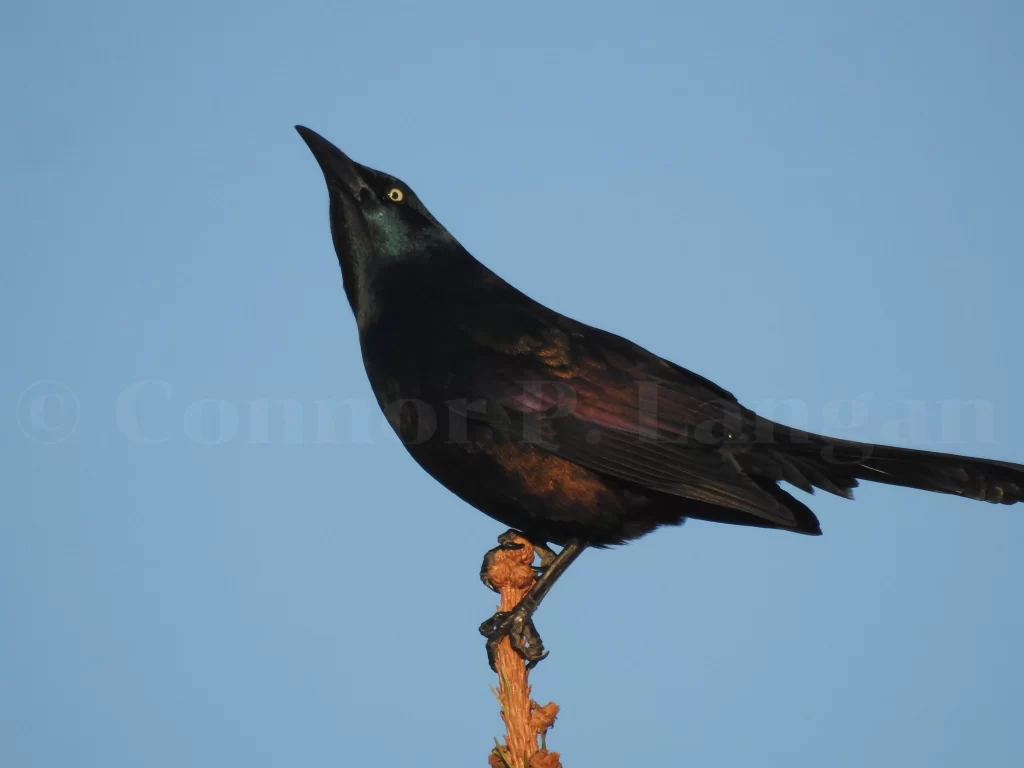
Common Grackles are sizable blackbirds with heavy bills. Males are not truly black Texas birds, as their plumage has shades of blue, green, and brown. Meanwhile, females are truly black with their dull plumage. Both sexes have yellow eyes.
There have been 190,000 eBird observations of these Texas blackbirds. Common Grackles may be observed at all times of the year, but keep in mind that they are largely absent from western Texas. Areas west and south of Odessa don’t tend to host this species.
Common Grackles excel in urban areas. Here, many people seek information about how to get rid of grackles since they are considered to be obnoxious bullies by many. Although many dislike them, Common Grackles are near threatened species that are worth protecting.
Great-tailed Grackle
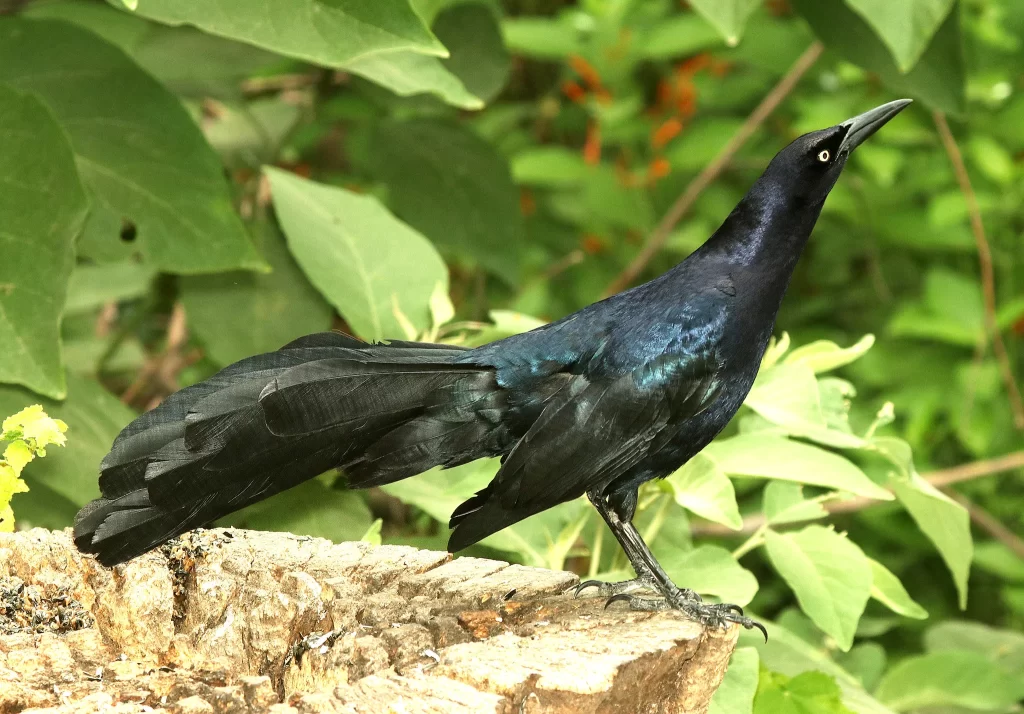
Great-tailed Grackles are among the most common birds in Texas, with more than 900,000 eBird reports. Males are Texas black birds with long tails, with females being brownish overall with dark wings. Both sexes have pale yellow eyes.
The entirety of Texas supports populations of Great-tailed Grackles, and these black birds of Texas are common all year. These grackles are habitat generalists, so any open areas adjacent to water can potentially host them.
Great-tailed Grackles look similar to the Boat-tailed Grackles found along coastal areas in Texas. However, note that these black birds in Texas with long tails have dark eyes as opposed to the pale eyes of Great-tailed Grackles.
Black-and-white Warbler
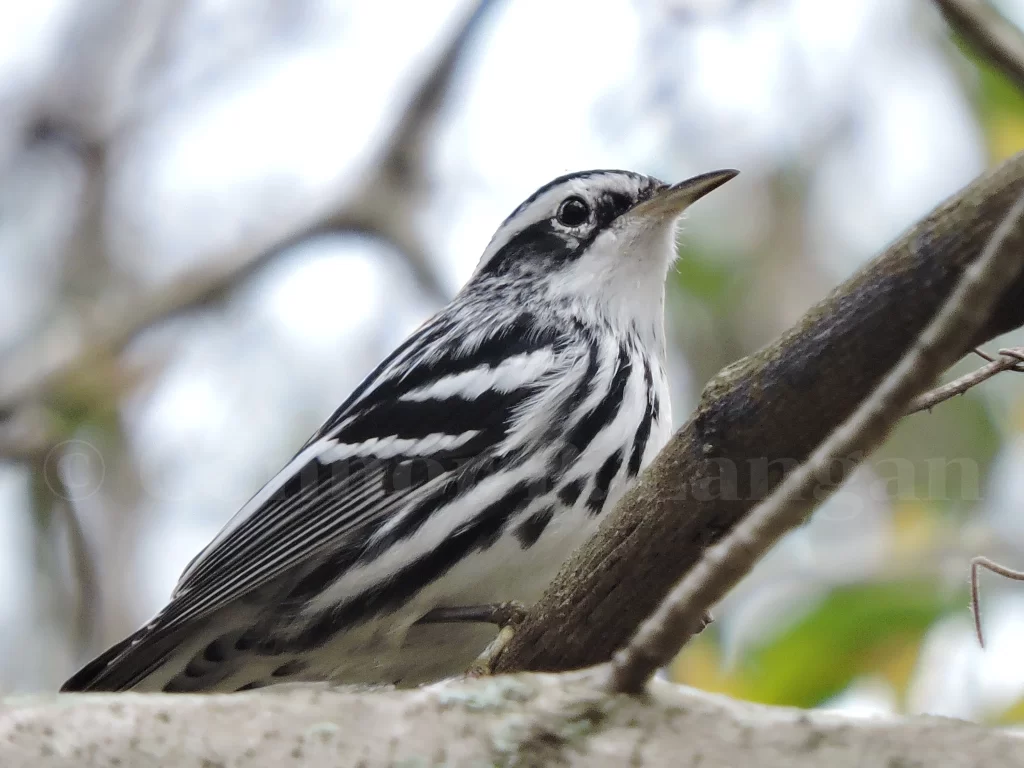
Black-and-white Warblers are aptly named songbirds, as both males and females are streaked black and white. Overall, males have more black coloration than females, but both birds deserve to be considered black birds in Texas.
These warblers are distinctive in their movements, as they scurry up and down trees with movements more reminiscent of nuthatches than other warblers. Substantial numbers of Black-and-white Warblers pass through southern Texas during migration, but some birds breed in the state.
Eastern Texas is the best place to look for breeding birds, as the forests here support considerable numbers in summer. Few Black-and-white Warblers are observed in the western half of Texas, but stragglers occasionally appear. More than 136,000 eBird reports detail this species.

